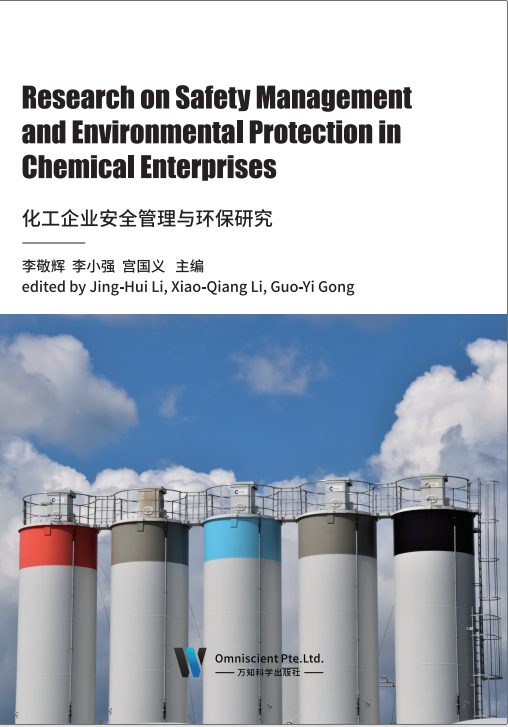
现代电力工程是与我们每个人都息息相关的、影响到我们生活方方面面的工程技术,而自动化控制同样也是科技发展对于现代行业发展所产生的红利,尤其是对电力工程,通过电气自动化控制技术能够避免传统人为控制过程中所存在的盲区或者误差,实现对于电力工程的时刻监控,确保电力工程的安全有效运行实施,降低工作人员工作强度的同时还可有效提升设备运行效率。
当今世界信息技术飞速发展,电气自动化和智能化的运用越来越广泛,电气系统和设备的控制也越来越重要。电气系统需要按照专业化的系统控制要求,才能更好地促使其自动化系统的形成,为电气控制系统更好地应用于社会生活奠定基础。而随着电气自动化技术的不断发展,电气设备和系统控制过程中对专业化的要求也越来越高,电气自动化行业的相关从业人员必须通过更加专业化、系统化的学习和研究,来适应这种科技与社会的进步。
本书主要对现代电力工程与电气自动化技术进行研究探讨。电气自动化控制系统对信息采集具有快速准确的要求,同时对设备的自动保护装置的可靠性以及抗干扰性要求很高,电气自动化具有优化供电设计、提高设备运行与利用率、促进电力资源合理利用的优点。

特种设备是指对人身和财产安全有较大危险性的锅炉、压力容器(含气瓶)、压力管道、电梯、起重机械、客运索道、大型游乐设施、场(厂)内专用机动车辆等,其中,锅炉、压力容器(含气瓶)、压力管道属于承压类特种设备,在国民经济和社会发展中占有重要地位。
承压类特种设备具有高压、高温、易燃、易爆、有毒、强腐蚀等特点,一旦发生爆炸或者泄漏事故,往往会导致并发火灾、中毒等灾难,造成人员伤亡、财产损失、环境污染等严重后果,甚至影响社会稳定。因此,承压类特种设备安全是国家安全生产和公共安全的重要组成部分。锅炉是重要的能源转换设备,也是煤炭等能源消费大户,属于高耗能特种设备,具有较大的节能空间,因此,推动锅炉节能降耗,对实现节能减排目标、促进低碳经济发展具有重要意义。
近年来,我国特种设备数量保持中高速增长,承压类特种设备向大型化、高参数、高风险、长周期运行方向发展,承压类特种设备安全与节能的监管难度不断加大,检验检测、节能监测要求不断提高。认真总结、分析承压类特种设备安全与节能检验实践中出现的问题,对提升承压类特种设备检验检测水平、保证检验检测质量、促进设备安全运行和节能降耗具有积极作用。
为保障特种设备的安全运行,国家对各类特种设备,从生产、使用、检验检测三个环节都有严格规定,实行全过程监督。本书将重点阐述特种设备的使用,做好事前管理。另外也在事故状态下从如何避免事故扩大、减少人身伤亡及财产损失等方面提出解决方法和建议。本书重点针对技能型人才的培养提供参考,同时也可作为涉及特种设备使用单位的实际操作指导。

面对全球技术发展的挑战,创新的关键是人才,人才增长取决于教育水平。因此,应特别注意提高学生在当前教育质量方面的创新能力。作为大学的计算机科学教师,我们有责任和义务通过课程教学的改革和实践,正确引导学生运用现代技术的成果。激发他们对现代信息技术学习的兴趣,并在他们的教学实践中发展计算机科学的综合应用能力和学生的创新能力。
就目前来看,虽然我国各大院校都已经开设了计算机教育课程,但是其在教育教学过程中地位并不是很高,这使得教师也并不是十分重视计算机教育。伴随知识经济时代的来临,以及计算机技术在各行业领域应用范围的扩大,使得人们也对计算机教育的关注度也随之不断地提升。因此,计算机教育成为一种面向社会,为社会发展和各项生产活动服务的教学科目。同外国发达国家计算机教育相比,我国大部分学生掌握的计算机基础知识与外国同学年段学生之间存在着较大的差距,所以,提升对计算机基础教学的重视度应该被纳入我国各大院校教育教学改革工作之中。
本书主要讲述的是计算机教学的发展以及创新。首先对计算机进行综述;接着对计算机教学以及发展进行讲述;最后对计算机教学创新实践研究展开讲述。通过本书的讲解,希望能够给读者提供一定的参考价值。

环境监测的科学数据和环境统计信息是我国制订国民经济、社会、环境协调发展计划(规划)的重要依据之一。环境质量如何会影响到国家和地方政府的重要决策,从这个意义上讲环境监测的质量是环境监测的生命,对其重要性无论怎样强调都不过分。环境监测质量包括监测资料(数据)的完整性、代表性、准确性、精密性和可比性。环境监测数据要能反映环境质量时间、空间上的分布及变化趋势;要能准确地对我国的经济、环境政策做出科学评估;要能对污染的责任做出公正科学的界定;要能对生态环境发生安全风险做出预警、对污染事故进行应急监测,对处理和受到损害的环境进行生态修复提供科学依据;环境是供全民享用的公共资源,公众有环境知情权;环境监测数据和信息要有公信力、要有科学性,而且在法律上有举证和辩护能力。因此,提高全国环境监测质量刻不容缓。提高环境监测质量有赖于监测人员技术水平的提高;有赖于监测装备的现代化;有赖于数据质量目标的系统规划,采样点位、频次和数量的合理设计、 QA/QC计划的制订及有效实施;有赖于监测分析方法的规范化与标准化;有赖于对监测数据结果的审核认定与统计分析,并最终根据监测结果做出科学的判断和决策。
总而言之,环境监测质量取决于环境监测全过程的质量管理。本书从实际应用的角度出发,从环境监测基础、环境监测质量保证介绍开始,经过对海洋、土壤、水环境等监测质量保证及控制的介绍,到数据质量的评估,涵盖了数据生命周期的全过程,内容丰富、新颖,文字流畅,深入浅出,通俗易懂,对于我国研究与完善环境监测质量管理具有重要参考价值。相信这本指南的出版定会对我国环境监测质量管理的制度化、系统化、科学化和规范化起到积极的推动作用,为提升我国环境监测技术和管理水平提供有力支持。
希望使用本书的读者在使用中对本书提出批评和建议,以便我们不断改善,精益求精!

安全环保工作是绿色化工实现的途径之一,可有效地保障化工企业生产经营过程的安全和环保,开发具有企业特色的绿色产品,最终达成可持续发展。目前,大多数化工企业存在盲目开发新产品的情况,导致资源的浪费和环境的污染。同时,化工企业在建设过程中也没有充分地将安全环保工作理念进行落实,缺乏相应的安全保障机制和管理理念。因此,化工企业需要及时地树立新的安全环保理念,落实安全环保工作,确保企业能够充分地进行资源的开发与利用,形成新的资源消费模式。
随着时代的发展,人们对化学品的需求与日俱增,可以说化学品已经逐渐渗入人们生活与工作的方方面面。在这样的背景下,化工企业得以迅速发展,不过随之也引发了一系列的问题,其中最受人关注的当属化工企业运营中的安全环保问题。由于绝大多数化工品都具有一定特性,如酸性、碱性、腐蚀性等,因此对于化工生产过程要求较为苛刻,必须严格控制,方可确保生产过程的安全性,同时还需要做好相应的处理,以避免对环境造成危害。
本书首先在对化学工业的基本知识进行讲解,紧接着,转入对化工企业安全技术与安全管理方面的详细说明,最终以环境保护结尾。通篇下来,旨在通过对安全技术与环境保护的研究,来为更多有需要翻阅该方面资料的读者提供可借鉴的内容。